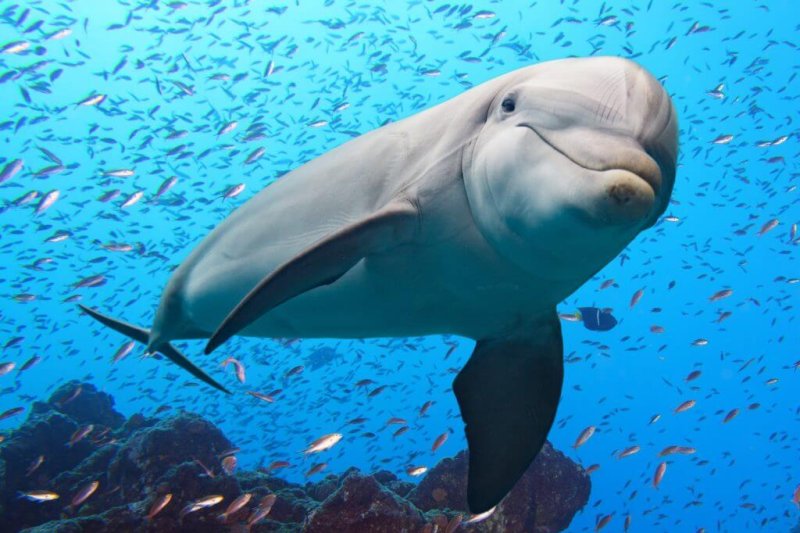The return to dolphins as a model for alien intelligence came in 1999, when SETI Institute astronomer Laurance Doyle proposed using information theory to analyze animal communication systems, particularly the whistle repertoire of bottlenose dolphins.
Since [John] Lilly’s initial experiments, researchers have found that a number of species communicate using something that approaches the complexity of human language. Whether it is appropriate to characterize animal communication systems as “languages,” in the same way that English or Mandarin are languages, is a matter of debate.
…
When [a language’s most frequently used] words are plotted logarithmically on a graph, the relationship among word frequencies yields a line with a slope of -1. [Linguist George] Zipf found that the -1 slope is common among most written and spoken languages, from Spanish to Mandarin.
…
If the dolphins engaged in meaningful communication with near-human complexity, the frequency of these sounds would yield a logarithmic slope of -1—just like most human languages. So Doyle and his colleagues plotted recordings from a group of captive bottlenose dolphins that had been observed from infancy to adulthood. The resulting slope had a gradient of -.95. This suggests that “dolphinese” may exhibit syntax.
…
As work by Doyle and his colleagues indicates, perhaps the best place to start is in the watery alien worlds of our own planet. Otherwise, we risk dismissing the first interstellar “hello” as meaningless noise.
Read full, original post: Dolphins Are Helping Us Hunt for Aliens































